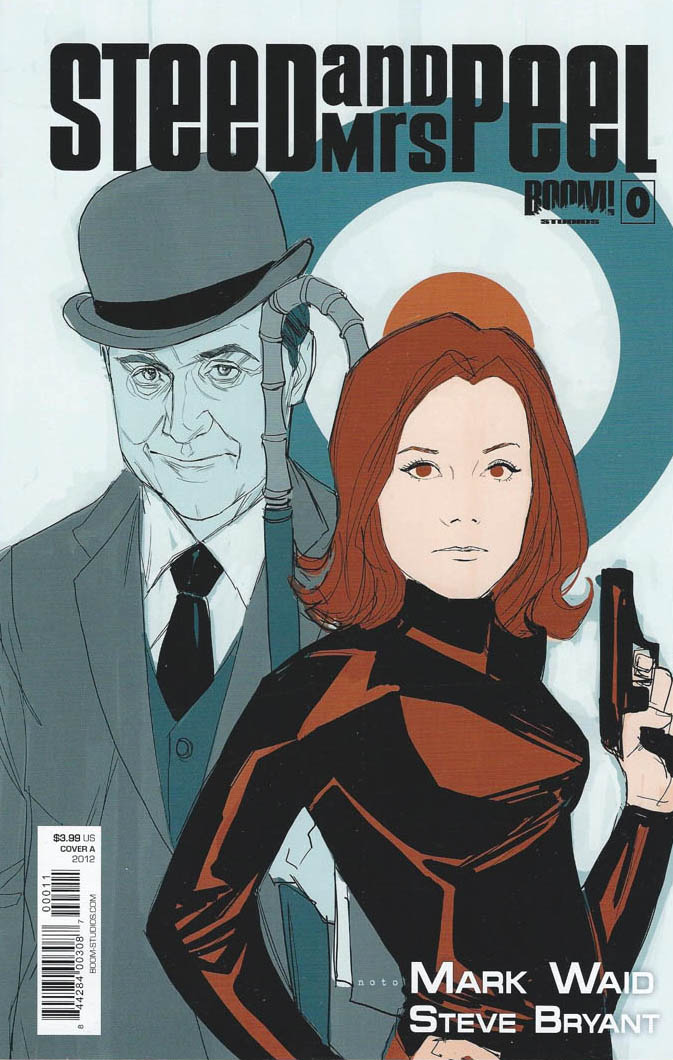Gambit #2
James Asmus/Clay Mann
Marvel Comics
As a character, Gambit (real name: Remy LeBeau) appeals for the same reason his fellow X-Man Chamber retains a dedicated fanbase: an improbable collision of soft stereotypes mixed with a weird special ability that permits writers to be somewhat creative in its use. In Gambit’s case, he’s devilishly beautiful thief-boy meets gator-wrestling Cajun meets New Orleans riverboat gambler, and his mutant power is to turn any random object into an unstable explosive simply by touching it. In the past, we’ve seen him use tow cables as fuses, spit chewing gum cherry bombs, turn zombies’ heads into grenades, time-charge a cigar to explode in Wolverine’s face and much more besides. Like most thief characters, he’s most fun when he’s using cunning and connivery to outwit his enemies.
Alas, due to a long-running apathy towards the character on behalf of Marvel writers across the board, Gambit has rarely been written as anything other than soldier class. He hurls charged playing cards at enemies, knocking them over without ever doing real harm, and makes occasional quips in that wholly fictional French-Southern bled accent. He falls with the rest of the team when the enemy plays its ace, and gets his licks in when normality is restored. When he’s been brought to the fore, it’s usually to explore his torturous on-off relationship with Rogue, or else he’s given a mysterious new ability that is subsequently dropped before it can be properly explored (see his ‘Death’ persona and, before that, his powers of clairvoyance while temporarily blind).
This is his fifth solo series, following two mini-series and two ill-fated attempts at an ongoing (the first lasted 25 issues and became a victim of internal politics at Marvel, while the second never really got off the ground and was cancelled after a year). Writer James Asmus has vowed to take Gambit back to his root as a character, ignoring completely his convoluted back story involving voodoo, secret guilds and tithing rituals. For Asmus, the ‘root’ of Gambit is the thief persona, and so we have a series which seems - over the first two issues at least - to be firmly in the heist mould. Issue 2 has all the staples: a rival thief, a laser net, a pickpocketing so deft even the reader doesn’t see it happen. There’s some good interplay between Gambit and his new romantic interest, and the art by Clay Mann is consistently strong and fluid (even if his Gambit is a little square-jawed). Remy also benefits hugely from not being surrounded by mutant powerhouses all the time. He shines best when back-up isn’t on its way.
But thus far, both the character and the book overall feel they’re missing something. Stripping Gambit down to the role of mutant thief removes some of the screwball charm of the character, and his drive and motivation in this series are something of a mystery. As of the close of issue 1, he has an alien device embedded in his chest that he’s desperate to remove, but it feels like a naked plot contrivance in place of any real character-based reason to keep getting into scrapes with low tier baddies. I can’t help but find myself missing Fabian Nicieza’s 90s Gambit, with his conflicting allegiances and easy flamboyance. Perhaps that time is past, but there needs to be something else in its stead. At the moment, Asmus simply doesn’t threaten to make any lasting, interesting changes to the character. He doesn’t even seem to be in a hurry to get inside Remy’s head, so it’s difficult to see how this series will find any leverage outside the character’s existing fanbase.
Steed and Mrs Peel #0
Mark Waid/Steve Bryant
Boom! Studios
One approaches with trepidation beloved TV series resurrected as comic books, and this is why. Mark Waid’s script does a decent job of emulating the wit and eccentricity of the 60s Avengers, but the decision to condense a complete story into 22 pages means the plot is rushed and simplistic. Emma and Steed visit the Hellfire Club again after one of their agents turns up dead. Steed falls into a trap, but it doesn’t take. You get the idea. Both characters remain unflappable throughout, and Steed uses his bowler hat as a shield. Waid has nothing new to add to the formula, nothing that makes this straight-laced exhumation seem worth anyone’s while. What do the Avengers mean to us in this day and age, other than nostalgia? No answer is forthcoming.
The real affront, however, is the art. I’m not sure whether Bryant was phoning this in or is inexperienced or what, but he’s singularly unable to find a way of capturing the likenesses of a young Patrick MacNee and Diana Rigg in simple lines. His efforts to do so mean that the characters’ faces distort and change from panel to panel. One version of Emma’s head looks suspiciously as if it’s been lightboxed, and this image is - I’m not joking - copy and pasted into five different panels throughout the comic, only once managing not to appear incongruous. The fight scenes, meanwhile, look utterly static, and are filled with weirdly drawn limbs. Bryant even uses most of one page to show Emma in her famous Hellfire Club outfit, only to miss out the spiked collar and accomplish something singularly unsexy. She actually looks as if she’s crushing the poor snake in her fists.
It’s sad, because I can see an Avengers book working; it just needs a lot more gumption and originality. Ideally, it wouldn’t be a slavish homage to the TV show but something that takes the mythos in unexpected new directions. Why not at least invest in a bold new visual style, rather than try and fail for realism?



No comments:
Post a Comment